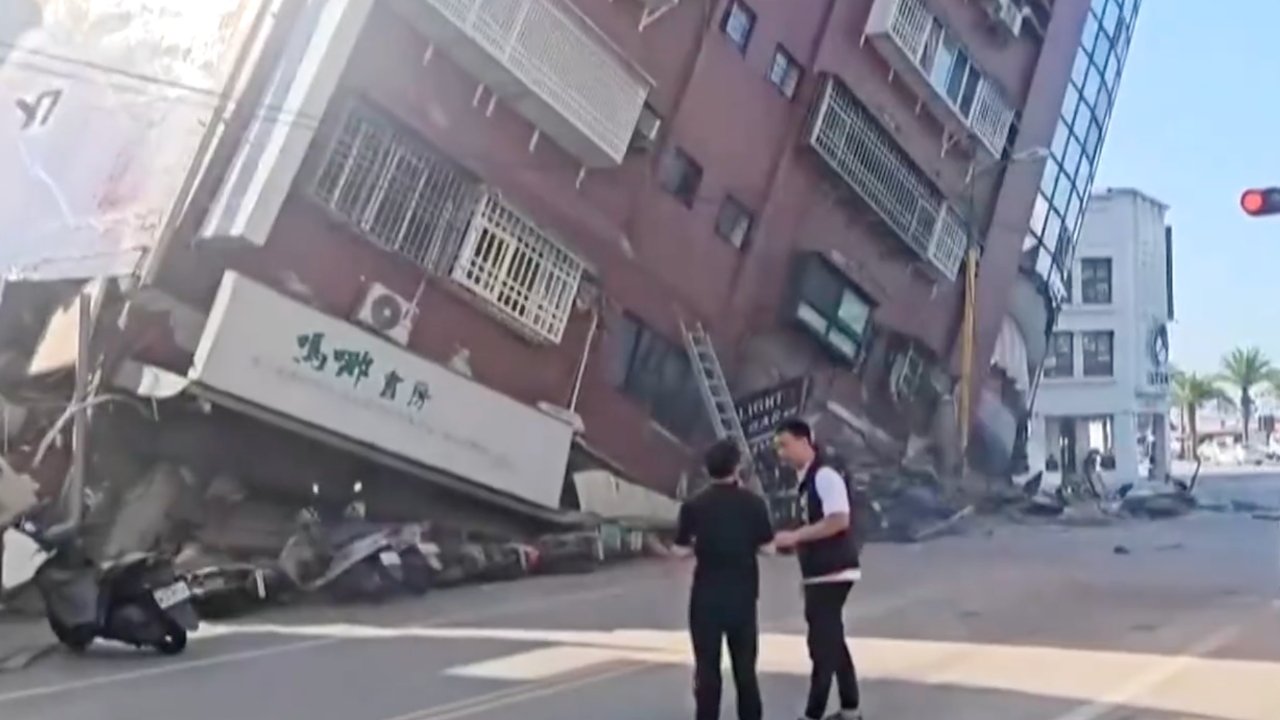Apple supplier TSMC evacuates as earthquake hits Taiwan
A 7.2 magnitude earthquake has hit Taiwan, killing 9, and causing Apple processor manufacturer to temporarily halt production.

There are no reports of TSMC facilities being damaged, but some domestic and office blocks were badly hit (Source; Reuters)
While Taiwan has had earthquakes before, this one at 8 A.M. local time on April 3, 2024, is the largest in 25 years. As well as the people killed, approximately 50 more are missing, and over 800 have been injured, according to Reuters.
The country is home to the Taiwan Semiconductor Manufacturing Co (TSMC), which is a major supplier of processors to companies worldwide. Those companies most notably include Apple, for which TSMC produces all of the main processors for the iPhone, iPad and Mac.
TSMC announced that it had followed its safety systems, and halted production on an unspecified number of manufacturing lines.
"To ensure the safety of personnel, some fabs were evacuated according to company procedure," a TSMC spokesperson said in a statement. The company later said that employees had begun returning to work.
The quake hit just offshore of Hualien, which is on the opposite side of Taiwan from TSMC's headquarters and main fabrication plants. It's not clear where Reuters gets the figure of a 7.2 magnitude quake, since it also quotes the US Geological Survey saying it was 7.5, and Japan's weather agency said it was 7.7.
In recent years, TSMC has been working to build chip fabrication plants outside of Taiwan. Perhaps its largest investment is in the US, where it is working on two plants for Arizona, but it has also had approval from local government to build in Germany.
Read on AppleInsider

Comments
absolutely mind bending there are over 100 aftershocks so far with most being over 4.0 in magnitude, the highest I saw was 6.2 which itself is a major quake. Being on the Ring of Fire seismic activity region is no joke.
It's somewhat under appreciated, I think, that Kansas has pretty good solar potential in addition to the fantastic wind potential.
https://neo.ne.gov/programs/stats/inf/201.htm
Kansas falls between Florida and Utah in terms of solar potential, which might not be obvious to folks who aren't familiar with that part of the country. Of course, Texas also has great potential for both wind and solar.
Combining the two is nice because the power supply is a bit less variable that way
FEMA provides an interactive map that identifies different risk probabilities for natural hazards, e.g., earthquakes, hurricanes, flooding, weather, and so on across the US. Kind of cool. So far it seems like the areas that have been selected for restoring US semiconductor fab capacity are at lower risk for earthquakes, but they may face other challenges.
https://hazards.fema.gov/nri/map
(Select a different Risk Index on upper left for different risk sources.)
Do the planners and financial supporters of mega projects use these maps as part of their site selection process? I don't know. Perhaps they are important for insurability and insurance cost reasons. My expectation is that the sites chosen are driven more by the federal, state, and local government and business leader's actions directed at stimulating the economies or gaining influence in the areas selected. In other words, I think it comes down to how well the politicians, lobbyists, and business planners in the candidate sites can influence those who are paying for the project to make it happen. Subsidies, tax abatements, cost sharing, greasing the skids to fast track any federal, state, and local environmental and regulatory hurdles, paying for infrastructure upgrades (including transportation infrastructure), access to workers, avoidance or compliance with organized labor concerns (depending on location and party affiliation), and in some cases, voter approval, and so on and so forth.
Risk assessment is definitely part of the decision-making process. How much it weighs in the overall selection criteria likely makes it a secondary concern, far lower than the money and politics factors.